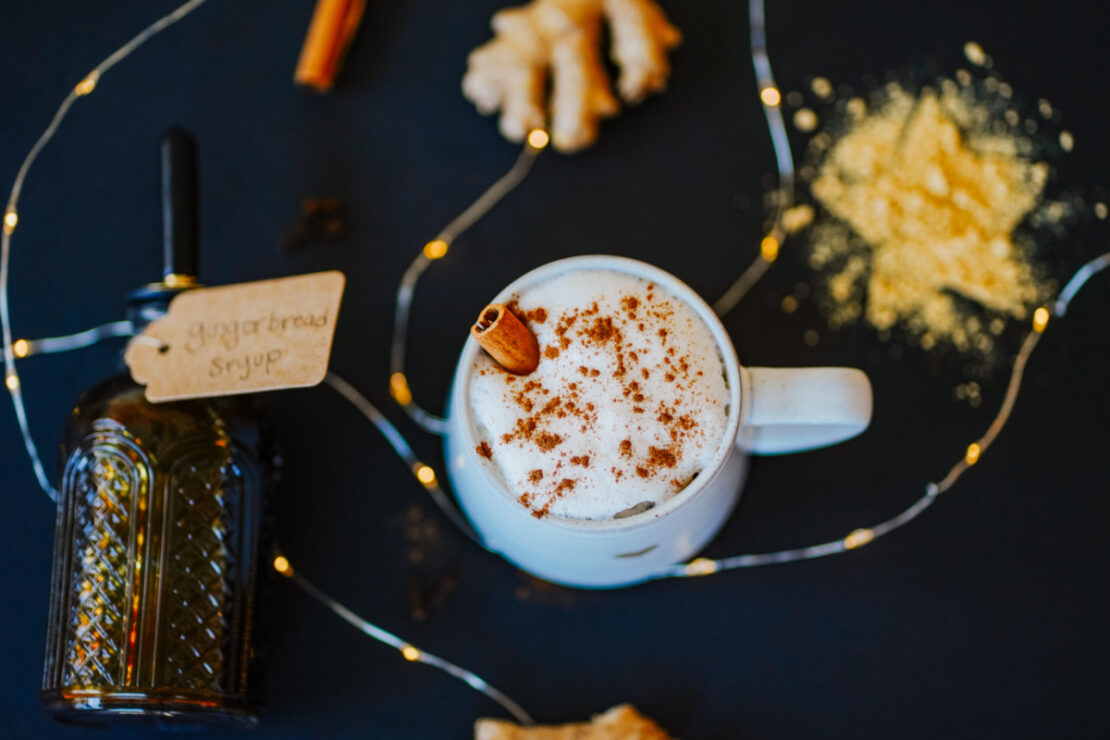
Cheers to a Nourishing New Year With a Gingerbread Latte Recipe
New Year’s Eve is an exciting time to celebrate and usher in a fresh new start! A night filled with reflective moments, resolutions, traditions, and delicious food and beverages. We want to help you raise a glass of gingerbread latte filled with nourishing herbs, spices, and ingredients to end the year right.
This spiced gingerbread latte may not be the first thing you think of when scheming up beverages to ring in the new year. But think again because this delicious blend of espresso—perfect for that jolt you need to make it to midnight–steamed milk, gingerbread syrup made from real herbs, and a sprinkle of cinnamon or nutmeg is both festive and nourishing. It’s the perfect combination of rich coffee flavor, warm spices, and creamy sweetness, making it a true winter treat for coffee lovers.
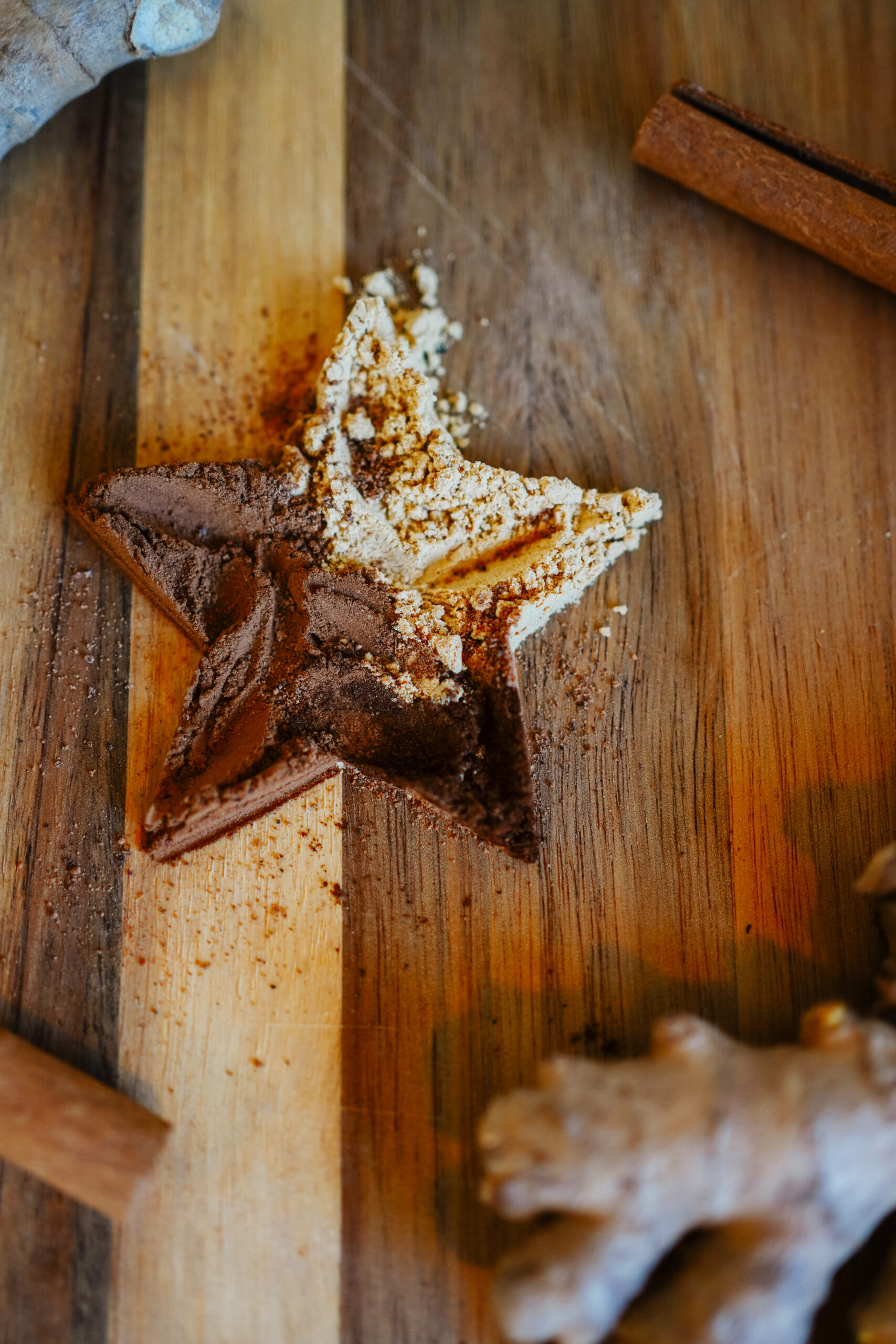
Ginger: An Herb To Use Year Round
Ginger (Zingiber officinale) rhizome, with that spicy, zesty, flavor we’ve come to love, is a uniquely versatile herb that has been used for centuries. It offers a wide range of benefits, some of which include assisting with pain and nausea, and studies on ginger reveal that it contains antioxidant, antimicrobial, and anti-inflammatory properties (Nguyen et al., 2020). Ginger has also been linked to anticancer potential and overall improvement in quality of life (Prasad & Tyagi, 2015). With a report card like this one, finding ways to use ginger in everyday recipes is surely a great way to end and start a new year.
Gingerbread itself has a rich history that dates back many past New Years—even before history was formally recorded! The use of ginger as a spice can be traced back to ancient China and India, where it was highly valued for its ability to ease a range of ailments (Bode & Dong, 2011). From there, gingerbread spread throughout the world, with different cultures adding their own unique twists to the recipe.
The combination of gingerbread spices, creamy milk, and a shot of espresso creates a warm and comforting drink that perfectly captures the essence of winter. While the exact recipe may vary from place to place, the core elements of a gingerbread latte remain the same—with the star of the recipe being gingerbread syrup.
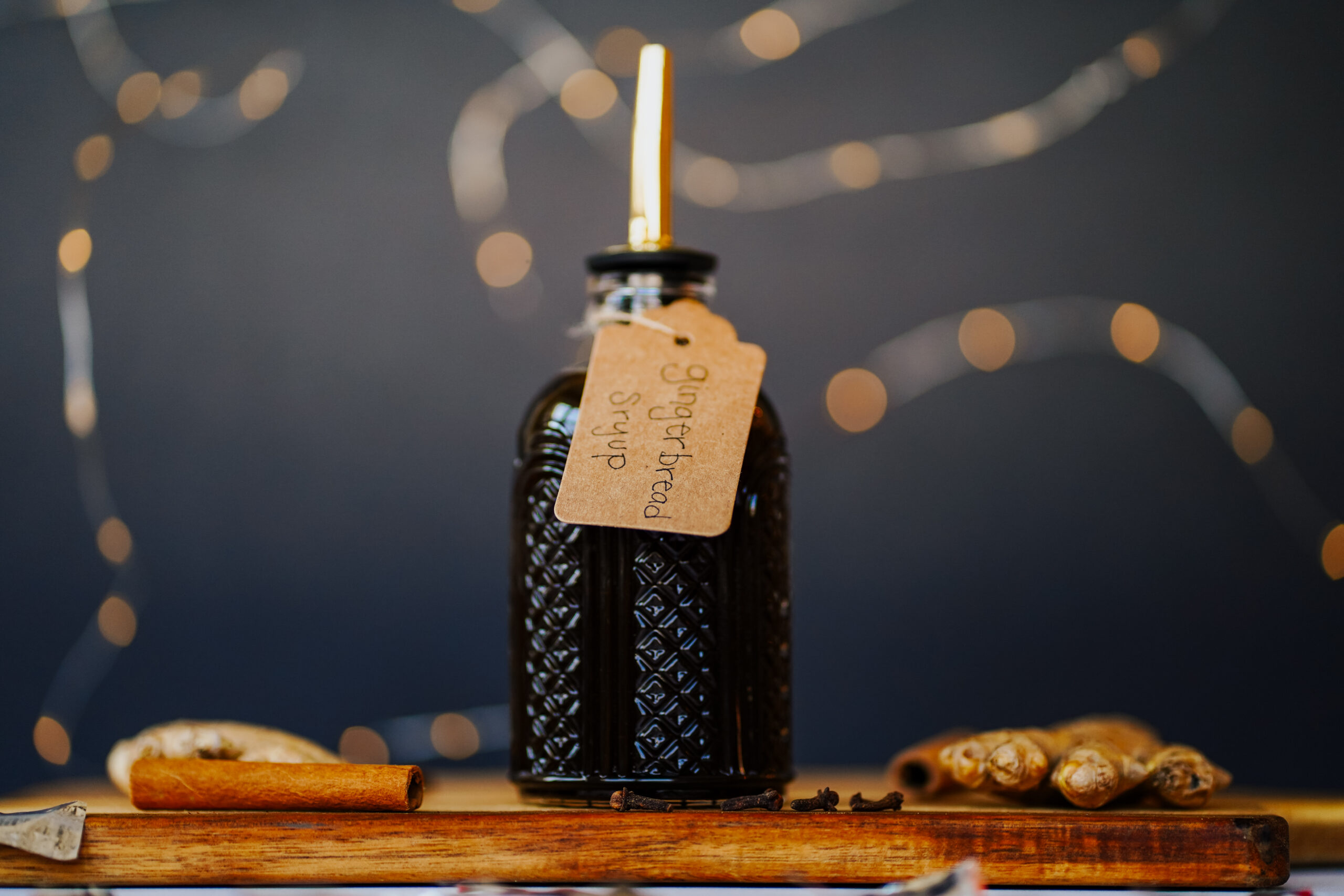
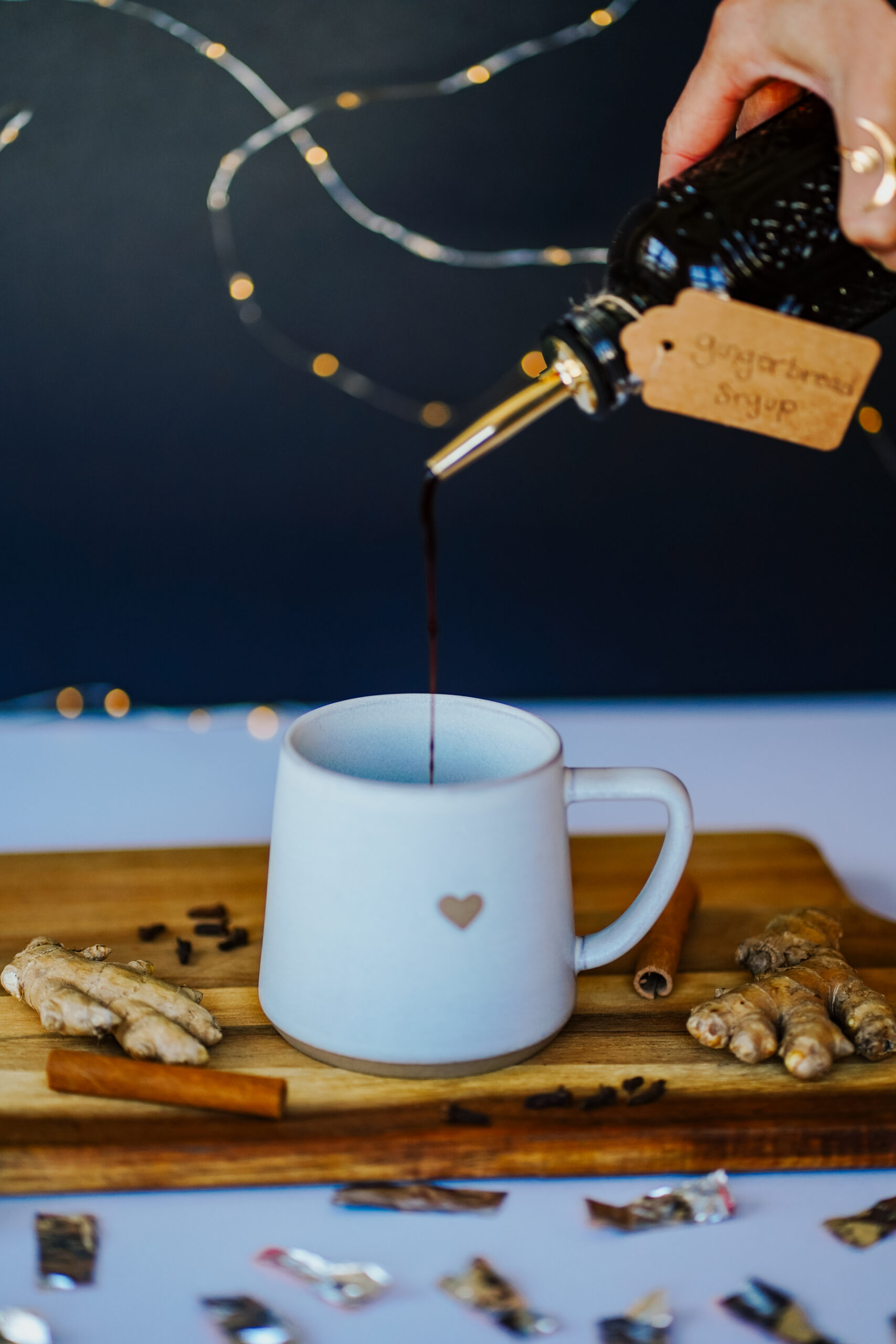
Gingerbread Syrup
The key ingredient that gives the gingerbread latte its distinct flavor is, of course, the gingerbread syrup. This syrup is made by combining traditional gingerbread spices, such as cinnamon (Cinnamomum spp.) bark, ginger (Zingiber officinale) rhizome, clove (Syzygium aromaticum) bud, and nutmeg (Myristica fragrans) seed, with maple syrup and molasses. The result is a sweet and spicy concoction that adds a delightful twist to your regular latte. Want an even bigger twist? The syrup itself contains nourishing ingredients that make adding this to your cup guilt-free!
Blackstrap molasses, that thick, dark syrup that seems to pour in slow motion, has an earthy taste for a reason. It contains significant amounts of minerals like iron, calcium, magnesium, and potassium, in addition to being a rich source of antioxidants and vitamin B6 (FoodData Central, n.d.). Because molasses contains iron and its absorption enhancers, such as sulfur, fructose, and copper, it is a common dietary supplement for iron-deficiency anemia (Jain & Venkatasubramanian, 2017). Perfect for winter, molasses adds a unique flavor to recipes, offering richness and a nourishing nutritional profile.
But the magic of the gingerbread latte doesn’t stop at its taste. It’s also a treat for the senses. The aroma of freshly brewed coffee mingling with the warm spices of gingerbread is enough to transport you to a winter wonderland. And as you take your first sip, the creamy texture and the burst of flavors will have you feeling like you’re indulging in a decadent dessert.

Comforting flavors and nourishing ingredients make this drink the perfect companion for New Year’s Eve! If you don’t have an espresso machine, simply sub in strong coffee. Yield: 1 cup
½ cup blackstrap molasses Start by making gingerbread syrup
Nourishing Gingerbread Latte
¼ cup maple syrup
¼ cup water
1 teaspoon ground ginger (Zingiber officinale) rhizome
1 teaspoon ground cinnamon (Cinnamomum spp.) bark
½ teaspoon ground clove (Syzygium aromaticum) buds
½ teaspoon ground nutmeg (Myristica fragrans) seeds
½ teaspoon vanilla (Vanilla planifolia) pod extract
1 shot espresso
½ cup steamed milk of choice
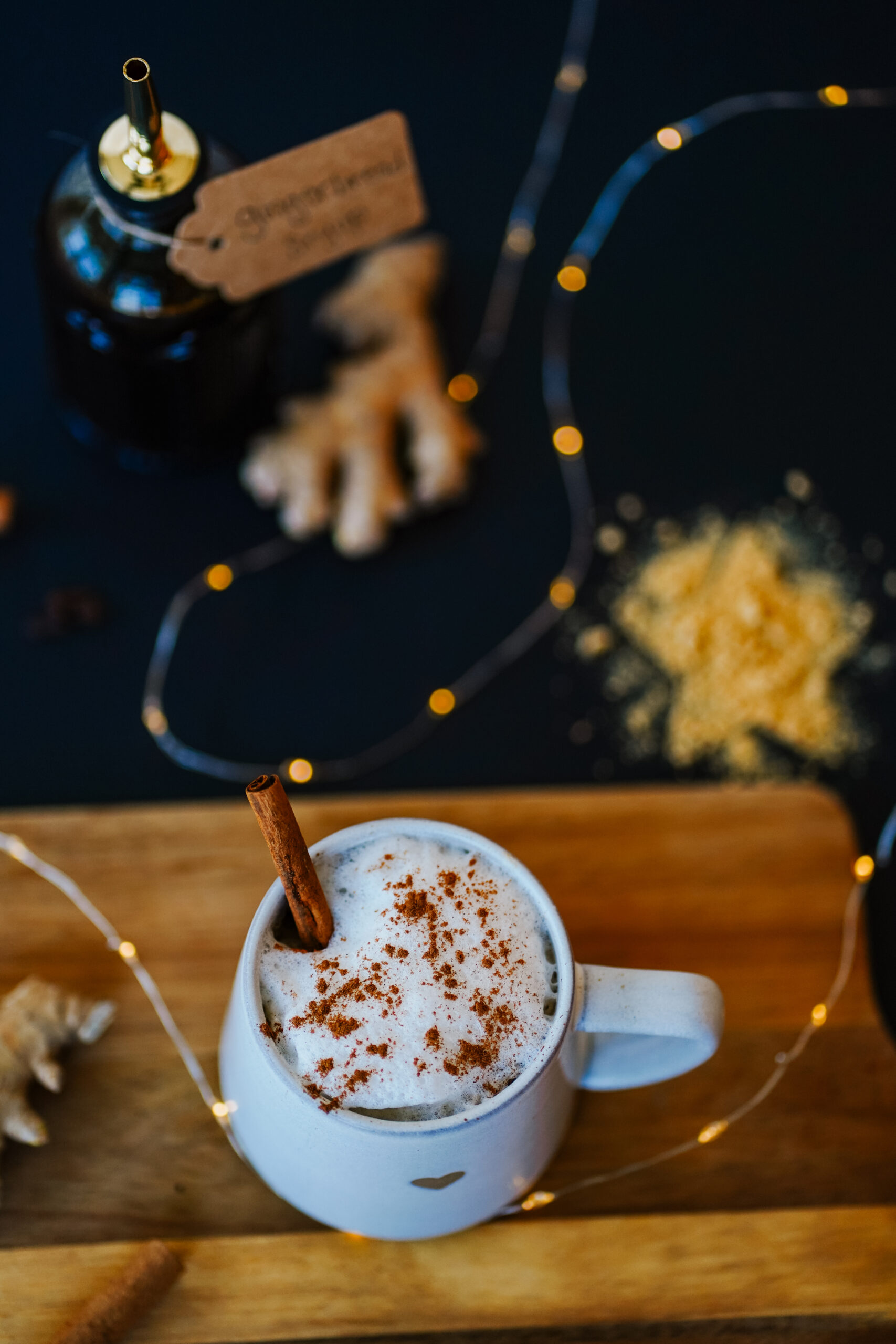
In Closing,
In the spirit of the new year, it’s time to celebrate the accomplishments and milestones achieved. It is a time to put those study hours to use and whip up something brimming with flavor and benefits. What better way to do that than ending the year the same way it was started—with an open heart and a warm mug of freshly brewed herbs? Cheers, friends, to a nourishing new year filled with herbal studies, nourishing botanicals, spices, and resolutions.
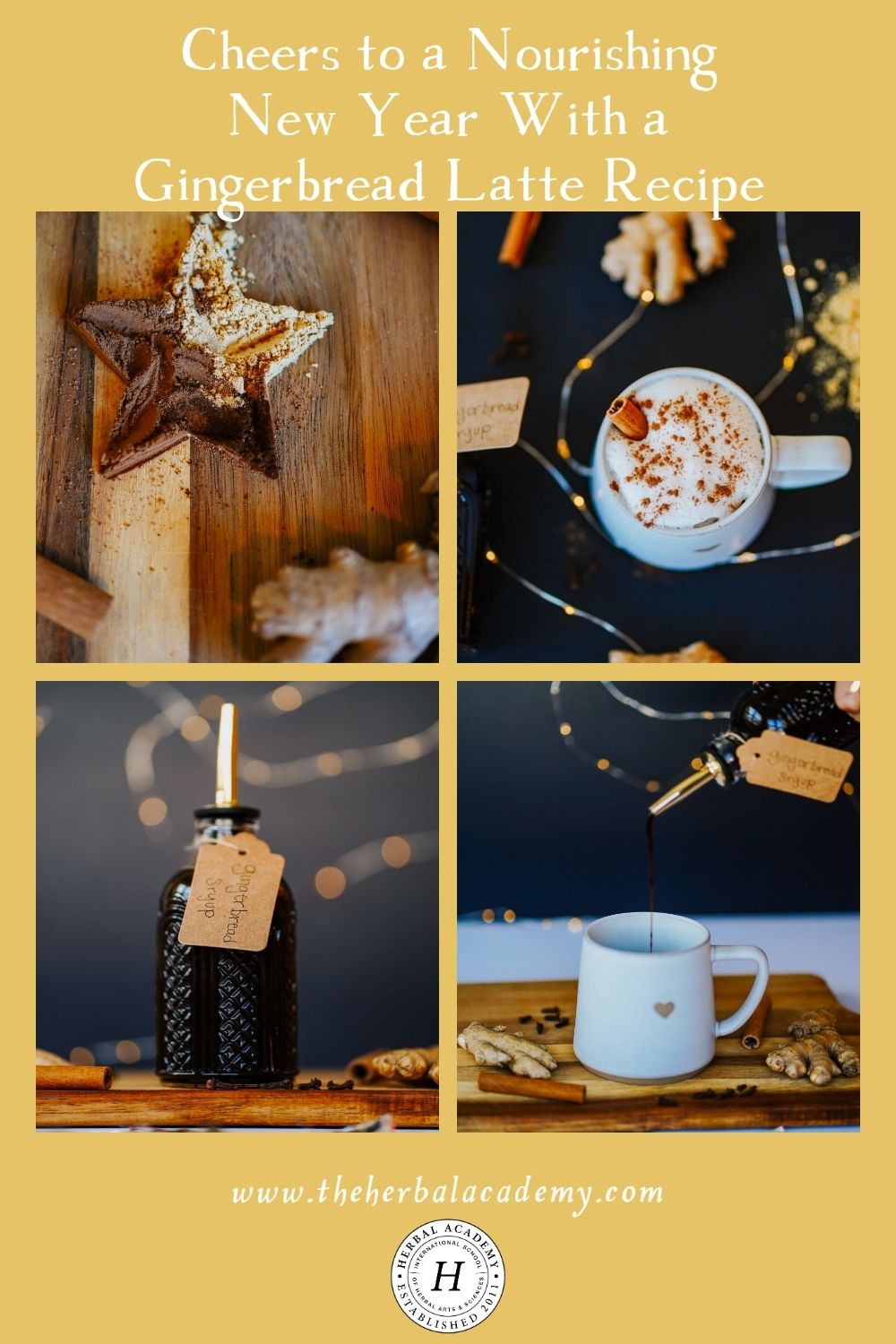
REFERENCES
Bode, A.M., & Dong, Z. (2011). The amazing and mighty ginger (I.F.F. Benzie & S. Wachtel-Galor, Eds.). PubMed; CRC Press/Taylor & Francis. https://www.ncbi.nlm.nih.gov/books/NBK92775/
FoodData Central. (2019). Fdc.nal.usda.gov. https://fdc.nal.usda.gov/fdc-app.html#/food-details/497778/nutrients
Jain, R., & Venkatasubramanian, P. (2017). Sugarcane molasses – A potential dietary supplement in the management of iron deficiency anemia. Journal of Dietary Supplements, 14(5), 589–598. https://doi.org/10.1080/19390211.2016.1269145
Nguyen, A., Kim, S.J., Long, N.P., Min, J.E., Yoon, Y.C., Lee, E.G., & … Kwon, S.W. (2020). Ginger on human health: A comprehensive systematic review of 109 randomized controlled trials. Nutrients, 12(1), 157. https://doi.org/10.3390/nu12010157
Prasad, S., & Tyagi, A. K. (2015). Ginger and its constituents: Role in prevention and treatment of gastrointestinal cancer. Gastroenterology Research and Practice, 2015, 1–11. https://doi.org/10.1155/2015/142979








